by Ocean Robbins: Oranges are a popular fruit all around the world, ranking right up there with apples and bananas as a global favorite…
And why wouldn’t they? They’re juicy, tasty, and portable; you can easily toss one in a lunch sack or in your bag for an on-the-go snack that comes in its own convenient packaging. And who doesn’t love trying to come up with words that rhyme with orange?
Actually, there is one English word that rhymes with orange: “sporange,” which is short for sporangium — a botanical term for an enclosure that contains spores. Eminem also assures us that you can put an “orange, four-inch, door hinge in storage,” and then have “porridge with Geo-rge.” But I digress.
Oranges are thought to originate from the tropical regions of Asia, especially the Malay Archipelago, which includes over 25,000 islands and islets situated between the Pacific and Indian Oceans. Most likely, the orange spread from its native habitat to India and the east coast of Africa, and then from there, to the eastern Mediterranean region.
Originally, oranges were mainly eaten for dessert. Orange juice, one of the most common ways to enjoy oranges today, didn’t become popular until the 1920s. But nowadays, oranges are well known for their vitamin C content and are often recommended as a go-to food when under the weather.
But are oranges good for you, like the citrus industry wants you to believe? Is orange juice really a necessary part of the “perfect breakfast”? And what about the environmental impacts of orange production? Are oranges a sustainable food? Or to return a phrase to its original context: “Is the juice worth the squeeze?”
Where Are Oranges Grown?
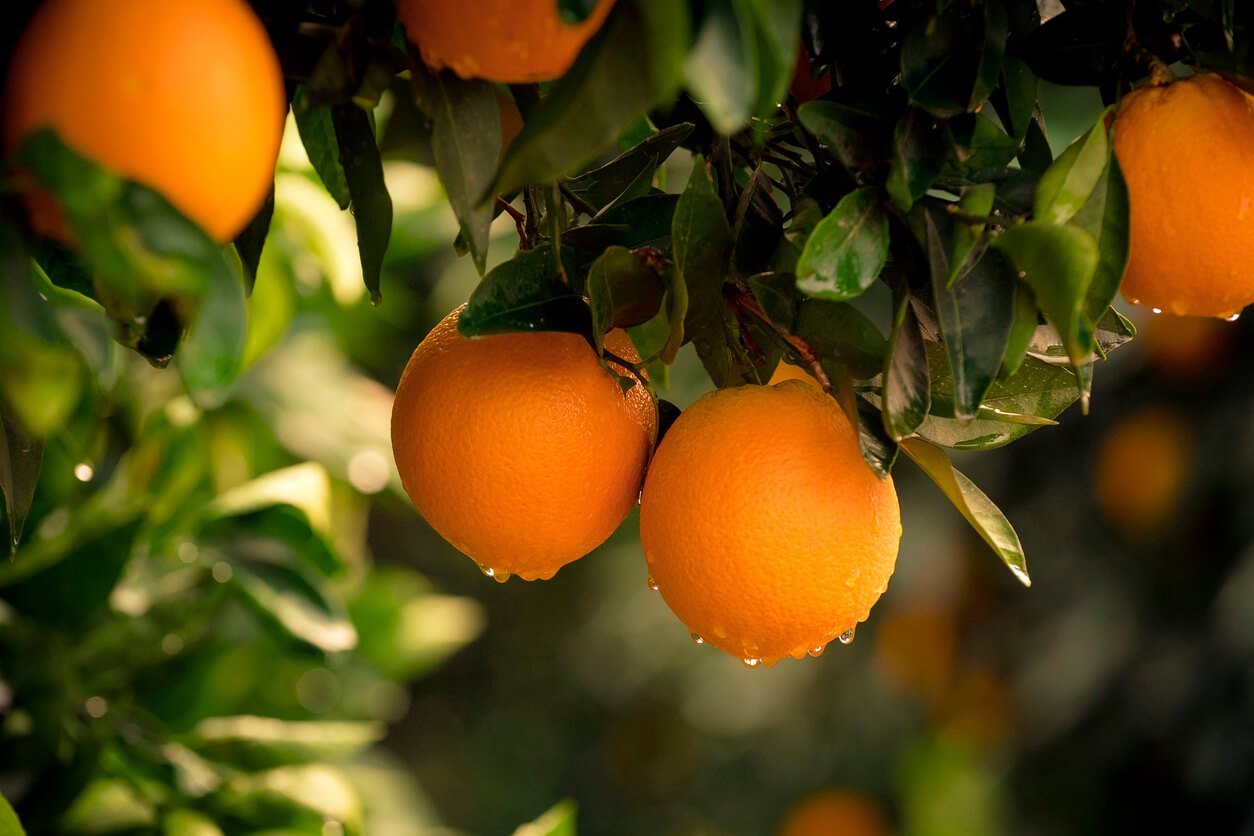
Oranges grow all over the world, including Asia, the Mediterranean, Africa, and both South and North America. But the leading orange producers are Brazil and the United States, which grow 30% and 10% of the world’s oranges, respectively. Brazil is also the leading consumer of oranges, followed by China and India. However, most of the oranges grown in the US are consumed domestically, whereas Brazil exports the majority of theirs. The top orange-growing states in the US include California, Arizona, Florida, and Texas. It’s estimated that over 50 million tons of oranges are produced every year.
Types of Oranges
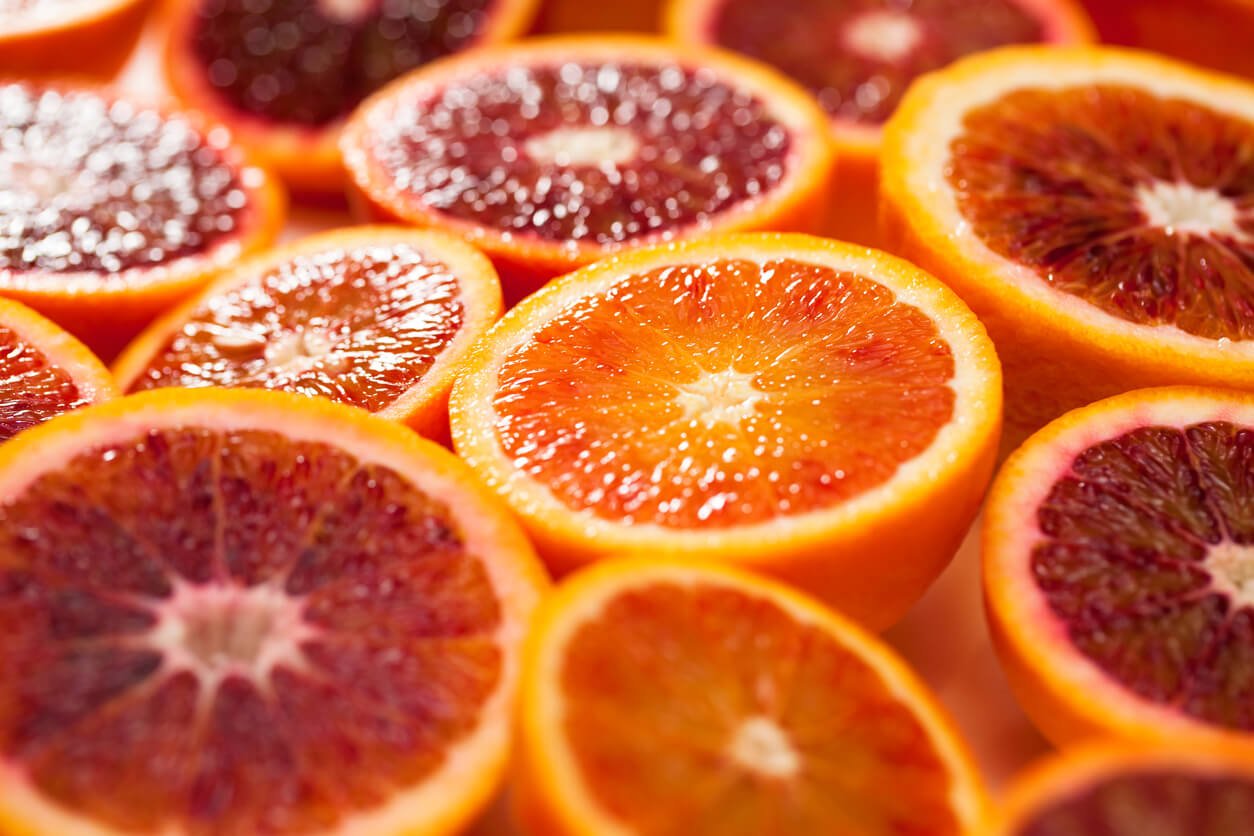
There are two basic categories of oranges: the sweet orange and the bitter orange. Sweet varieties include the common orange, blood orange, navel orange, and acid-less orange. Most oranges, and their hybrid cultivars that you can find in the grocery store, fall into the sweet orange category. In the US, the bulk of sweet oranges you’ll find are usually the Washington Navel, the Valencia, and the Hamlin varieties.
Bitter oranges are mainly used for rootstock, sweet orange hybridization, and to make things like marmalade and marinades. That reminds me of a groaner I heard as a child: “What did the baby bird say when it found a citrus fruit in its nest?” “Look at the orange momma laid.” (Get it? “Momma laid” does sound a bit like “marmalade.”) Common varieties of bitter oranges include the Seville orange, bergamot orange, and the trifoliate orange.
If you’re wondering about Mandarin oranges, they’re kind of their own unique category, and in fact, are a separate species, Citrus reticulata Blanco. That doesn’t mean they deserve any less love, though! In the US, Canada, and UK, mandarins, tangerines (clementines are a tangerine variety), and satsumas are all classes of the Mandarin species. And in India, the kinnow — pronounced “kinoo” — is a juicy, high-yield Mandarin-hybrid variety that was introduced in 1935. But this is an article about oranges, so with all due adoration, we’ll leave our discussion of Mandarins at that.
Nutrition of Oranges
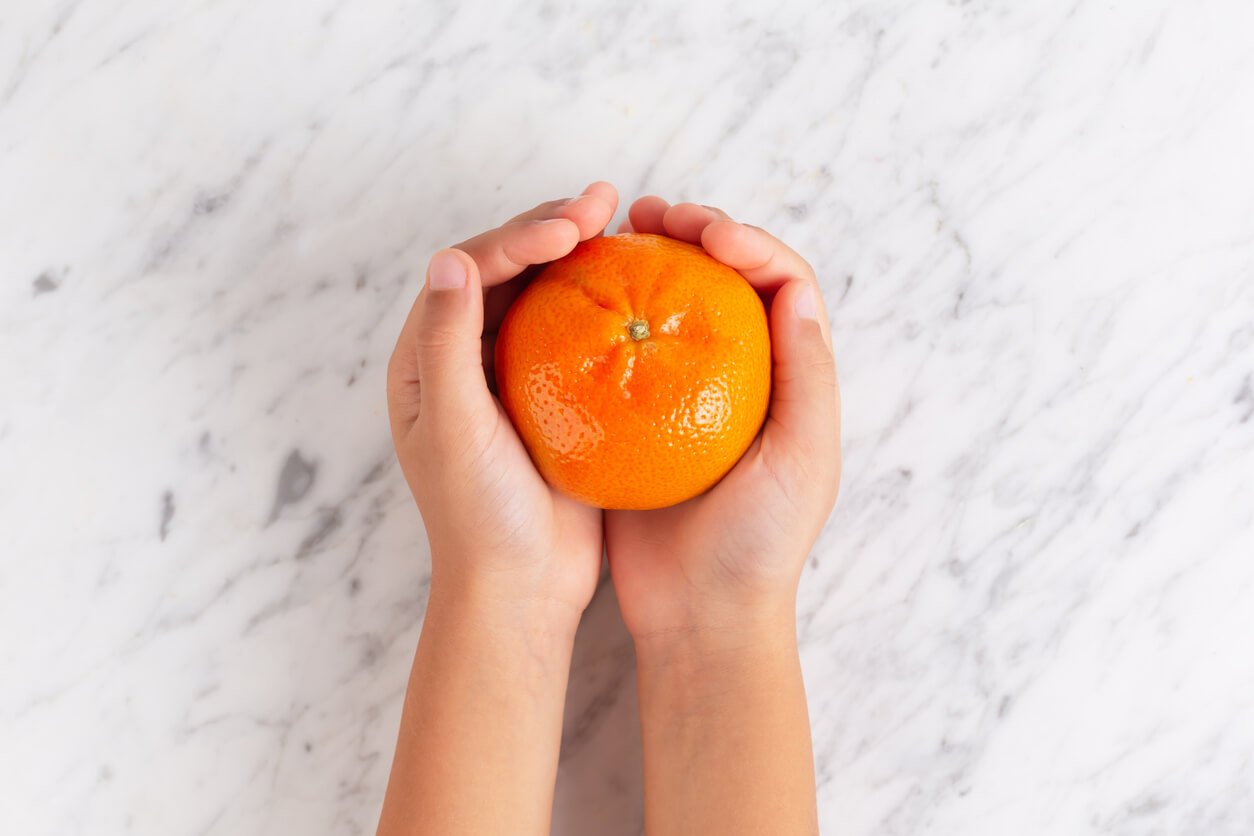
If we played a word association game called, “Name that Nutrient,” and I said “orange,” you’d almost certainly reply, “Vitamin C.” You’ve probably been told to drink orange juice, or eat oranges, when you feel a cold coming on. This advice is backed by research — vitamin C can indeed strengthen your immunity.
But oranges aren’t a one-hit-wonder. In addition to their immune-boosting properties, they offer plenty of other nutritional benefits. They contain a fair amount of calcium, potassium, and vitamin A, and even have a little bit of protein. Oranges are also high in disease-fighting antioxidants like beta-carotene, which you’ll find in other orange-colored plant foods like sweet potatoes and carrots.
And while oranges are higher in natural sugars than some other fruits and veggies, they fall at 51 on the glycemic index scale. This is considered mid-range, and isn’t likely to spike your blood sugar much (when eaten in their whole food form), thanks to their high fiber content.
One medium orange offers around three grams of fiber, a nutrient that is unfortunately lacking in the typical western dietary pattern. In fact, while the USDA and other experts recommend getting 30-40 grams of fiber per day, most American adults only eat 10-15 grams. In the UK, typical daily intake isn’t much better, with most adults getting around 18 grams of fiber in their diet. Why do we need more fiber? Not only is this a critical nutrient for digestive health, but getting enough can help lower your risk for things like type 2 diabetes, heart disease, and even some cancers.
Health Benefits of Oranges
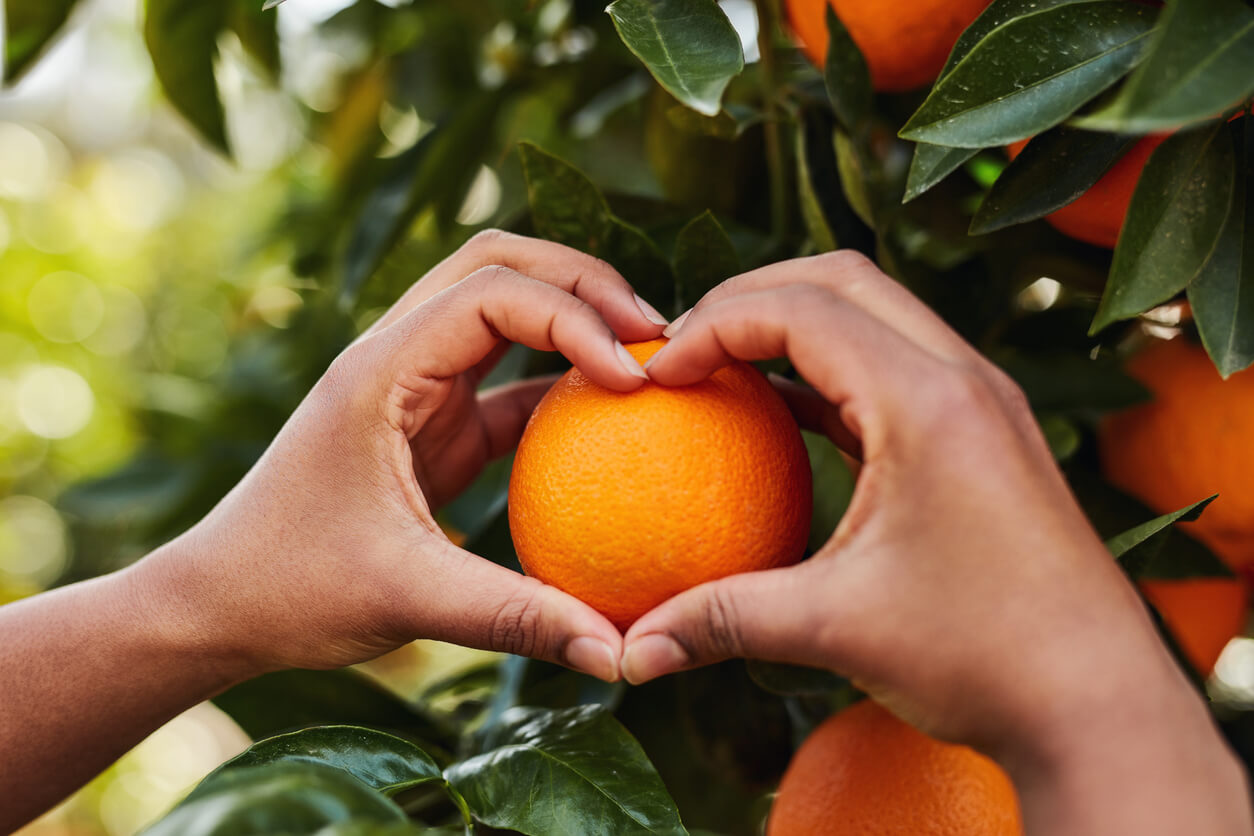
Oranges aren’t just juicy and nutritious. They also have a lot to offer when it comes to health benefits.
May support gut health.
Some research shows that eating citrus fruits may be helpful in reducing symptoms seen in digestive conditions like inflammatory bowel diseases like Crohn’s disease and ulcerative colitis. This has been largely attributed to their flavonoid compounds, such as quercetin, kaempferol, naringin, and hesperidin.
Some studies have also found that drinking 100% orange juice for two months had favorable impacts on gut bacteria, such as increased growth of beneficial Lactobacillus and Bifidobacterium. This positive effect on gut flora, and the increase in Lactobacillus and Bifidobacterium, has also been observed in studies on lupus, a multisystemic and chronic autoimmune disease. Citrus flavonoids appear to help with improving gut microbial dysbiosis that’s often linked to the progression of lupus.
May support immunity.
Eating oranges when you feel sick may be a folk remedy, but new research suggests that there’s real science to validate the practice. In fact, oranges may contain compounds that are potent enough to help fend off even more serious germs. For instance, vitamin C is a powerful antioxidant that helps protect you from pathogens and plays a key role in cellular functions of both your innate and adaptive immune system.
A 2020 study published in the journal Antioxidants discusses that the flavonoid hesperidin, found in oranges and other citrus fruits, may have antiviral activity in the body.
Furthermore, hesperidin and vitamin C appear to help counteract cell-damaging effects of free radicals that are triggered by inflammation and viral infection. Interestingly, both the common cold and COVID-19 are caused by coronaviruses, which is why vitamin C may be helpful against both types of infections.
May protect against heart disease.
When it comes to health-promoting benefits of oranges, it’s not just what’s on the inside. Some research at the UF Institute of Food and Agricultural Sciences suggests that compounds in orange peels may help improve the ability of your gut to prevent arterial plaque formation — or atherosclerosis — a major risk factor for heart disease.
How is your gut bacteria related to heart disease? When you eat certain foods, your gut bacteria produces a byproduct called trimethylamine N-oxide, or TMAO. Your levels of TMAO are strong predictors of heart disease risk (i.e., higher levels indicate a higher risk). Orange peels contain compounds that interfere with TMAO formation.
Furthermore, a 2013 study published in the journal Lipids, Health, and Disease found that adults who consumed two cups of 100% orange juice per day for at least one year had lower levels of total cholesterol, LDL “bad” cholesterol, and apoprotein B — a protein constituent of LDL cholesterol. They also had improved levels of folate and vitamin C in their diet, compared to people who didn’t consume the orange juice.
And in 2015, researchers implemented a study designed to be able to see if there were meaningful improvements in blood flow (also known as endothelial function) after a month of ingesting citrus peel powders. In the study, 90 overweight and obese participants aged 10-18 years old were randomly assigned to one of three groups. Each participant received either a daily capsule of lemon or sour orange powder, which contained citrus peel rich in antioxidants, flavonoids, pectin, and vitamin C — or cornstarch as a placebo. Interestingly, the study was triple-masked, meaning that neither the participants, doctors and nurses, or even the researchers knew who was in each group. Using a measurement technique called flow-mediated dilatation, the researchers found that those in the lemon and sour orange groups had significantly better endothelial function than the placebo group.
May have anti-obesity properties.
In 2020, researchers at Western University began examining a compound called nobiletin in sweet oranges and tangerines that’s thought to have anti-obesity effects. Their studies stemmed from animal research; mice fed a high-fat, high-cholesterol diet who received nobiletin were leaner and had less insulin resistance and healthier blood fat profiles than mice on an identical diet without the addition of nobiletin. Nobiletin also helped reverse obesity in already-obese mice, while also improving their arterial function. Human studies are needed to determine whether this can also work for people.
May have anticancer effects.
A 2017 systematic review of 22 studies examined the role of citrus juices and their preventive effect for cancers and found strong evidence for their ability to help protect humans from cancer.
What is it about oranges that may help to prevent cancer? It’s probably a combination of things, but one hypothesis points to the “pith” or “albedo,” the spongy white material just below the orange peel. Apparently, this stuff is rich in a flavonoid called hydroxyflavanone (2HF), which has been investigated for its protective effects in studies on breast and kidney cancers. In some research, 2HF actually helped prevent cancer from moving into organs where it would have otherwise metastasized. While more human clinical research is needed, this is an impressive indication that eating more oranges — white, spongy stuff and all — may be a more helpful habit than we realize.
May offer anti-inflammatory effects.
Chronic, low-grade inflammation has been identified as a risk factor for a number of diseases that plague western cultures. So it seems that whatever you can do to reduce inflammation in your body is crucial for preventive health, which may include eating more oranges. Research shows that citrus fruits contain flavonoids, alkaloids, limonoids, coumarins, carotenoids, phenolic acids, and essential oils that offer anti-inflammatory effects.
And in a 2013 review, researchers found that drinking orange juice for at least seven consecutive days helped reduce inflammatory markers. This was thought to be thanks to the oranges’ vitamin C content and the flavonoid compounds hesperidin and naringenin.
May help prevent nutrient deficiencies.
Oranges quite literally helped save the lives of countless sailors on long voyages in the 18th century. The disease scurvy, which manifested in symptoms like easy bruising, bleeding gums, and delayed wound healing, was widespread among sailors until the British physician James Lind decided to see if feeding sailors lemons and limes would help. It did because scurvy is caused by a severe deficiency of vitamin C, which is, of course, concentrated in citrus fruits. This led to British sailors not getting scurvy, but the derogatory nickname “limey” instead.
Unfortunately, scurvy has made a comeback, not among sailors, but in individuals with diabetes. The probable cause is the lack of fruits and vegetables in their diets. And in many low- and middle-income countries, vitamin C deficiency is still widely prevalent, impacting as much as 50% of certain populations. Luckily, getting enough vitamin C can be as simple as eating an orange a day. (Sorry, apples!)
Plus, eating oranges is a great way to help boost the absorption of iron because vitamin C helps make the mineral more bioavailable to your body. Adding orange slices, or other citrus fruits, to your iron-rich and plant-based meals is a simple way to help make sure you’re absorbing enough iron.
What About Orange Juice?

Orange juice lacks the fiber content of a whole fruit. And while some brands contain pulp — which adds a little fiber to your glass — drinking it regularly raises some concerns.
Drinking juice may spike your blood sugar more and faster than eating a whole orange, for two reasons. First, drinking juice won’t fill you up as much as eating a whole orange, so you’re likely to consume more sugar from juice than you would get from eating the fruit. A glass of orange juice could contain the juice of three oranges, and you can down it in a minute or less. But you’d be hard-pressed to eat three oranges in one minute. Second, the fiber in whole fruit buffers the sugar, which explains the orange’s relatively moderate glycemic index score of 51.
There’s also a difference between freshly-squeezed juice and the juice you can buy at most supermarkets. The “pure and natural,” “100% orange juice,” “not from concentrate” product in the orange carton is often actually a scary mixture of old, boiled juice (to prevent spoilage) that would taste just awful but for the addition of flavor packs. These are customized to a brand’s specifications for their juice’s flavoring and are added to orange juice — that may have been waiting in storage for many months — to restore taste and smell. Also added back to some juices are orange oil and essence, in addition to added sugar in some cases.
The bottom line: the best way to enjoy an orange is in its whole food form. But if you’re going to have orange juice, your best bet is first to squeeze it yourself, and then add it to smoothies along with some fat or protein to slow down the sugar absorption. Or drink it alongside a high-fiber meal to help keep your blood sugar levels steady.
Health Risks of Eating Oranges

Oranges are a delicious fruit with a lot to offer nutritionally. However, there may be a couple downsides to consider with this citrus superstar.
Citric acid, which occurs naturally in oranges and other citrus fruits (hence the name), can be a problem for people who experience regular bouts of acid reflux. This condition, which feels like a burning sensation in the chest, occurs when stomach acid is pushed back up into the esophagus, an organ far less resilient to high acidity than the already acidic stomach.
Oranges are also high in the mineral potassium, which is a good thing for most people. However, if you take beta-blockers (a class of medications used for lowering blood pressure), then excess potassium could be a concern because beta-blockers can increase potassium levels in your body. When mixed with large amounts of potassium-rich foods, like oranges, this can lead to too much potassium in your body. A food-drug interaction like this is also a significant concern for people whose kidneys are not fully functional, as the additional potassium cannot be effectively removed and can lead to hyperkalemia, which can damage the heart.
Are Oranges Sustainable?
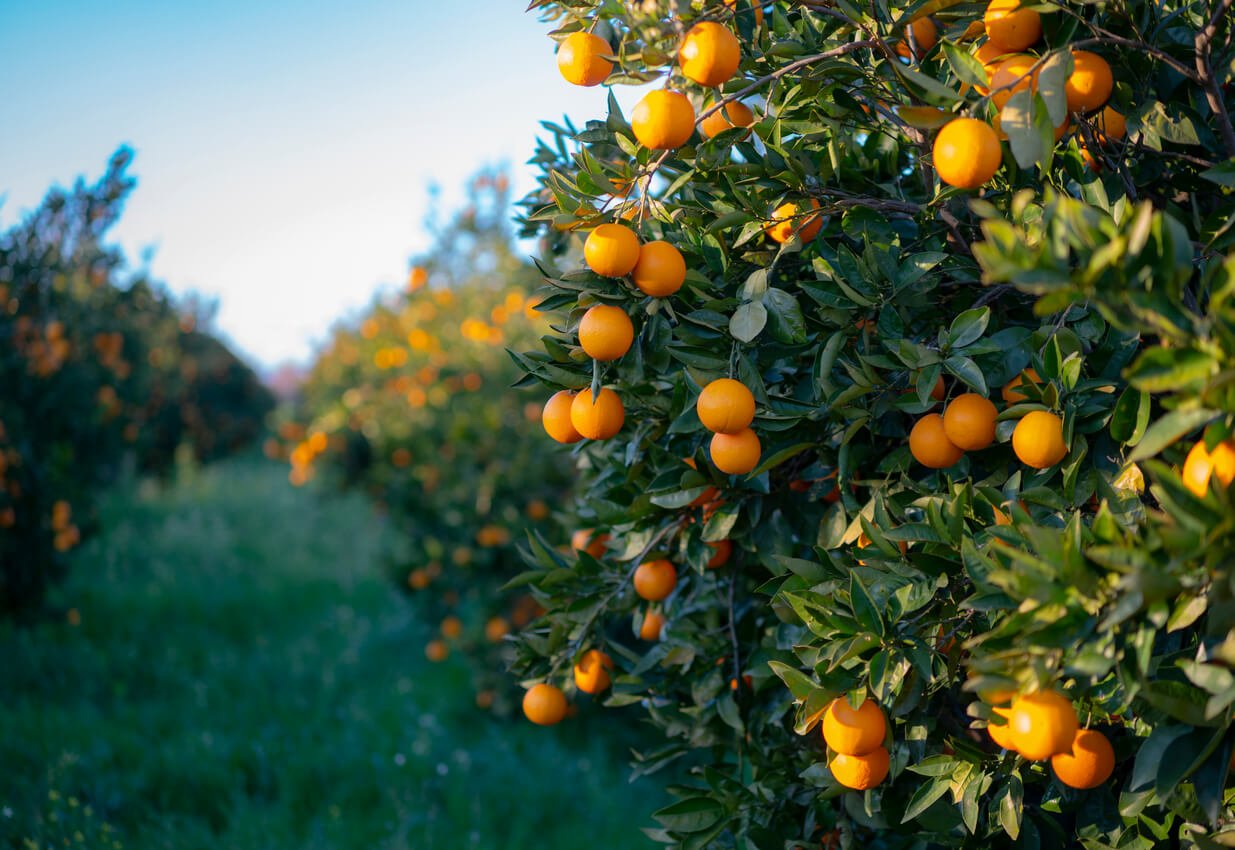
Unfortunately, as healthy as oranges are, when it comes to their social and environmental impact, not everything is peachy (or orangey?) in orange-land.
The orange industry often relies on migrant farmworkers to grow, harvest, and pack the fruit; and sometimes, they’re treated very badly. For just one horribly disturbing example, there’s the Italian migrant labor controversy of the past decade. Thousands of migrant workers, predominantly from Africa, but many from Eastern Europe, travel to find seasonal work harvesting fruits and vegetables in western Europe. But more than 80% of the migrants working in agriculture there don’t have an employment contract.
A 2012 investigation into migrant workers in Southern Italy’s orange industry found that many were sleeping on the ground and living without water, electricity, or basic hygienic services. This is largely because some farmers were taking advantage of cheap labor supply through the use of middlemen, or gangmasters.
And even though not all conditions are as extreme as those discovered in Italy in 2012, the commercial orange juice industry is rife with problems like discrimination, low wages, and poor working conditions. In Brazil, which is the world’s largest producer of oranges, orange production also contributes to deforestation of tropical rainforests. While rainforests are cut and burned primarily to create land for cattle grazing or feed, some areas have been cleared to make space for new orange groves.
Unfortunately, oranges are also subject to the overuse of agricultural chemicals. Almost all non-organic orange groves are sprayed with chemical fertilizers, pesticides, and herbicides, including, often, glyphosate — a probable human carcinogen.
Choosing Ethically Grown Oranges
What can you do to help combat these issues and vote with your dollar? One of the best ways is to buy organic oranges grown as close to you as possible — especially if you live in California, Texas, Florida, or in a country with a warm enough climate to grow oranges. You can also lean into organic and fair-trade certified options.
Perhaps the most helpful certification is the one that comes from the Rainforest Alliance. This certification indicates that the oranges or orange juice were grown in a way that was fair to the farmworkers and better for the planet.
The Rainforest Alliance certification mandates that orange farms make clear progress towards a living wage for their workers, through a model of continuous improvement. It also incentivizes farms to address problems like forced labor and discrimination, instead of hiding them, and adopt alternative pest control methods in place of highly hazardous pesticides. Certified farms and processing facilities are required to set up an internal oversight committee to help address all of these types of issues and practice remediation skills. Finally, Rainforest Alliance also puts an emphasis on climate-smart agriculture to help orange growers adopt practices that are better for the environment.
How to Choose, Store, & Use Oranges
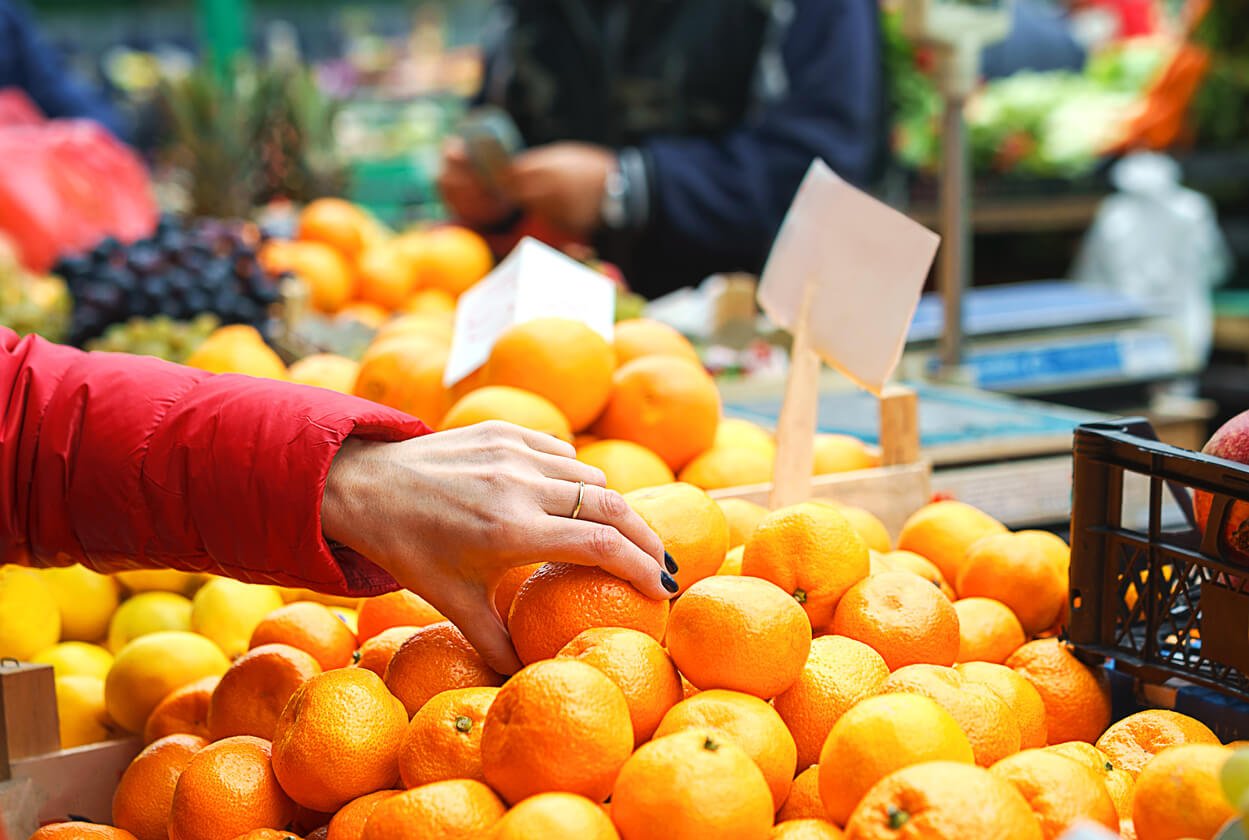
Now that you have a more nuanced knowledge of oranges, their nutritional makeup, and their environmental impact, how do you choose the best ones?
In addition to looking for locally grown and organic, or at least Rainforest Alliance certified whenever possible, look for fruit that has firm, smooth, and thin skin. An orange should be evenly colored and feel heavy for its size, indicating that it contains a good amount of juice inside. Avoid ones that feel soft, have squishy spots, or have visible signs of mold on the outside. And while the brightest oranges may appeal the most to your eyes, keep in mind that their coloring isn’t actually the best indicator of quality, as some commercial oranges are dyed with a substance called Citrus Red #2 to make them more attractive to consumers.
Once you get home, oranges will generally keep well at room temperature for up to a week. You can also store them in the produce drawer of your fridge for up to two weeks.
As for using oranges, most are delicious as-is, once you cut them into wedges or remove the peel to get to the juice inside. You can also use them in beverages like smoothies, mocktails, or in homemade orange juice.
Oranges give a sweet flavor to baked goods like muffins, breads, or even pancakes, and pair well with dark chocolate. I’ve used them to make a marinade for tofu, seitan and tempeh, and to add a citrus flavor when making soups and other savory dishes. Orange sections, (including Mandarins, which aren’t really an orange but still deserve consideration!) are also a great addition to mixed green salads.
A-Peeling Orange Recipes
Below you’ll find a trio of recipes using whole orange, freshly squeezed orange juice, and orange zest (the outer peel of the orange, which contains the highest amount of essential oils).
The Fennel Orange and Avocado Salad is refreshing and delightful, bursting with flavors and colorful ingredients. The Moroccan Bulgur Bowl with Savory Orange Dressing is filled with irresistible spices and satisfying textures. The Raw Chocolate Orange Pudding is everything you dreamed it would be and more — a silky combination of dark chocolate and orange (a duo that was meant for each other!).
1. Fennel Orange and Avocado Salad
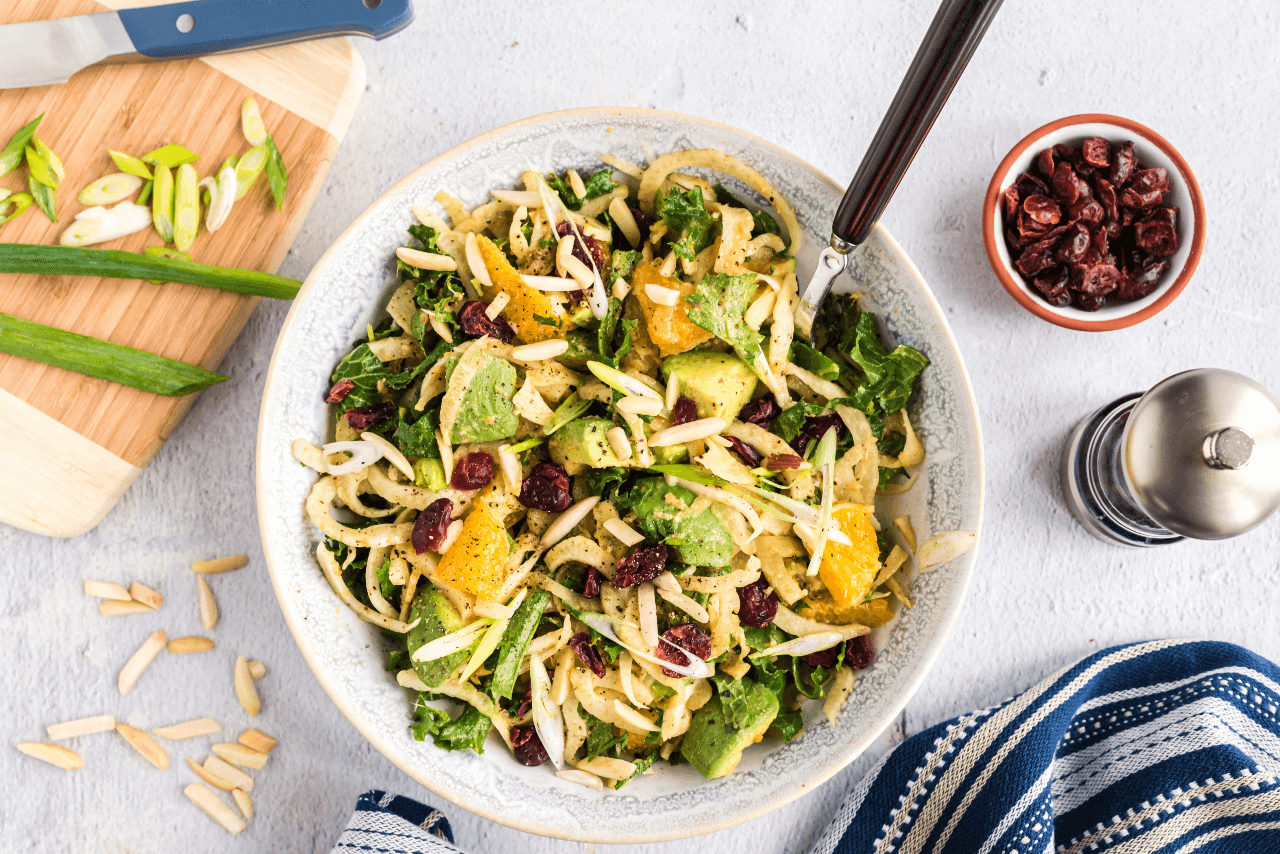
This is a two-for-one recipe — two tasty and simple recipes using nutritious oranges to make one delicious salad. First, make the Orange Miso Dressing using freshly squeezed orange juice for a savory and slightly sweet dressing that you’ll want for days to come (hint: double the batch!). Second, assemble your nutrient-packed ingredients, including fennel, orange, kale, and avocado, before drizzling with the dressing for a refreshing orange-centric dish!
2. Moroccan Bulgur Bowl with Savory Orange Dressing
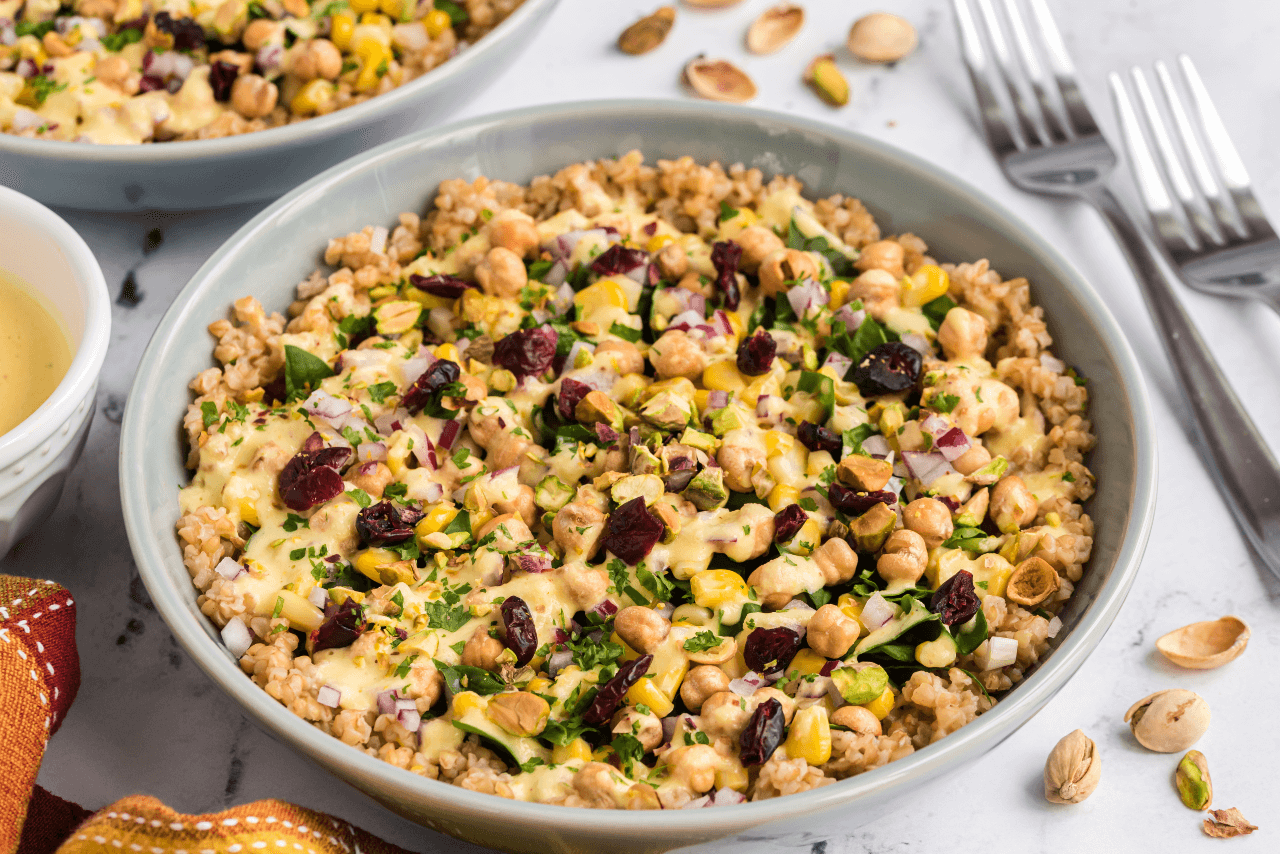
This dish is filled with a healing blend of spices, irresistible flavor combinations, and a celebration of textures. The Savory Orange Dressing is a sublime blend of naturally sweet orange with nutty tahini and tart apple cider vinegar. Add it to fragrant bulgur wheat (or quinoa) with veggies, and top it all off with crunchy pistachios and cooling mint for a satisfying and nourishing plant-based meal.
3. Raw Chocolate Orange Pudding

Fresh orange juice and zest help to “disguise” the avocado in this recipe so that your tastebuds think it’s “decadent” while your body knows it’s nutritious. This chocolate pudding is incredibly healthful, with a foundation of avocado, dates, orange, and cocoa to create a smooth, sweet consistency. Plus, if you haven’t enjoyed the combination of chocolate and orange yet, now’s the time to taste this delectable duo!










































